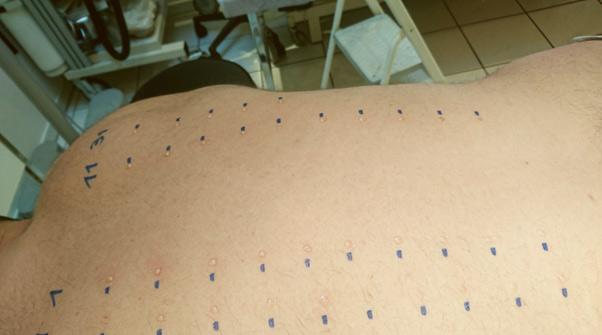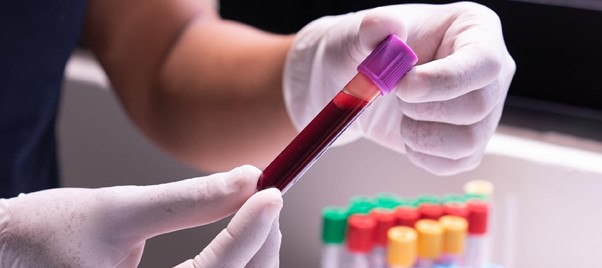
Everything You Need to Know About Allergy Skin Testing
If you’re dealing with allergies, then you know how uncomfortable and debilitating they can be. But the good news is that there are steps you can take to help alleviate your symptoms and get back to living your life.
One of those steps is allergy testing. Allergy testing is a simple procedure used by doctors to identify which substances, or allergens, trigger the body’s allergic reactions.
Here is everything you need to know about allergy skin testing.
What Are Allergies ?
Before discussing allergy testing, it’s important to understand exactly what allergies are and why they occur. An allergy is an overreaction of the body’s immune system when it comes into contact with an allergen—a substance that causes an allergic reaction in some people.
Common Allergens
Common allergens include dust mites, pet dander, pollen, food ingredients, medications, and insect venom.
When exposed to one of these allergens, the body produces antibodies that release certain chemicals into the bloodstream which cause inflammation and irritation of the skin or respiratory system (or both).
These physical symptoms can range from mild itching eyes or sneezing to something much more severe such as hives or difficulty breathing.
Not All Allergies Require Testing
Sometimes allergies can be detected through observations or self-reported symptoms, such as sneezing or hives after eating a certain food.
In these cases, allergy tests may not be necessary. Your healthcare provider will evaluate your case and determine if further testing is needed.
Types Of Testing
Several different types of allergy tests can be used to diagnose allergies, including skin prick tests (SPT), intradermal tests (IDT), patch tests, blood tests, and challenge testing. These different types of tests measure different aspects of your body’s reaction to allergens.
Skin Prick Tests or SPTs
This involves introducing small amounts of allergens into your skin via a tiny needle prick or scratch on the surface of your skin and then monitoring for any reactions over some time (usually 15-20 minutes).
This type of allery skin test is typically used when evaluating environmental allergens like pollen, dust mites, or pet dander or food allergies like shellfish or peanuts/tree nuts.
Blood Tests
Blood tests are also available; however, they do not provide immediate results as skin prick tests do. Blood tests measure antibody levels in response to specific allergens rather than actual reactions like skin prick tests do.

Patch Tests
Patch tests involve placing patches containing tiny amounts of potential allergens onto the skin over usually 3 days which allows doctors to evaluate whether an immune reaction has occurred over time.
Patch tests are typically used when trying to identify contact dermatitis caused by exposure irritants like latex rubber fragrances etc.
Challenge Testing
Challenge testing involves ingesting small doses of an allergen under close medical supervision to measure how severe an allergic response might be if exposed again in real-life settings.
This type of testing is only done when necessary due to its risks but could provide valuable information if conducted properly.
Preparing For Your Test
For your test results to be accurate, you must prepare properly before your appointment.
Make sure you tell your doctor about any medications or supplements you are currently taking as these may interfere with test results.
Additionally, avoid using antihistamines before your appointment as this could also affect your results negatively.
Lastly, dress comfortably on the day of your appointment as some tests may require removing clothing from areas being tested (like arms).
What To Expect During Your Test
During a skin prick test appointment, you will be seated in a chair while a doctor pricks each area being tested with a tiny needle containing small amounts of allergen solution.
After 20 minutes have passed the doctor will measure any reactions present at each site including redness and/or swelling.
Blood tests require drawing blood from a vein so expect a little bit of discomfort during this process but overall it should only take 15-20 minutes total for both procedures combined.
Interpreting Results
The most important thing after having allergy testing done is understanding what your results mean so you can take action accordingly if needed.
Usually, within 1-2 weeks following your appointment you will receive written results from either yourself or through a referral from another provider (depending on who performed the test).
Results usually come in two forms – either positive/negative (for blood tests) or scale-based (for skin prick tests).
Positive/negative results indicate the presence/absence of allergies whereas scale-based readings indicate severity level by grading scale (e.,g., 0-4+).
Talk with a medical professional about the next steps based on findings so the best course of action can be determined moving forward if needed (i.e. avoidance techniques or medication management).

Conclusion
Allergy testing is an essential step towards identifying triggers and managing allergies more effectively long-term; understanding what type of test is right for you ahead of time plus preparing properly before and knowing what to expect during and after testing will ensure the accuracy and best understanding of results possible so appropriate action can be taken if needed!
For more information about allergy testing, visit Allergy Skin Test Singapore today. By taking these measures patients can feel empowered knowing their allergies are being managed correctly and safely going forward!


